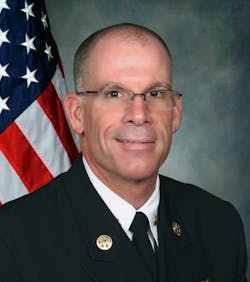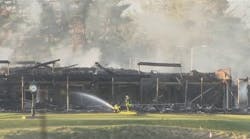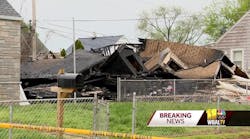Ask any firefighter how much live-fire training they’d like to have and the response will undoubtedly be expressed in one word—“MORE.” As firefighters, there’s one thing we know for sure: We like fighting fires, and in the absence of an opportunity to respond to and engage at a working fire, the next best thing is live-fire training.
Live-fire training is the foundation of what we do. It's the one and only opportunity we have to witness firsthand the elements of fire behavior and fire dynamics in a supposed safe and controllable environment. It serves as our testing ground and our means of refinement for the strategy and tactics we develop and deploy on the modern fireground. It’s a mechanism in which we can test our endurance and physical stamina within the environmental extremes and, in many cases, right or wrong, it’s the rite of the passage to becoming a sworn firefighter.
As a fire instructor and training chief, I’ve always been a strong proponent of live-fire training; in fact, I always prided myself on having more days of live-fire training in the recruit academy in Savannah, GA—where I served as a training chief—than any other department. It was—and for the most part still is—my firm belief that the most effective way to transition a civilian to a sworn firefighter is to expose them to the rigors of live-fire training, not once, not twice, but as many times as the schedule will allow.
In June, I had the opportunity to travel to Champaign, IL, where researchers and veteran fire instructors at the Illinois Fire Service Institute (IFSI)—in conjunction with UL, NIOSH, Skidmore College and the University Illinois, Chicago—conducted testing designed to answer some much-needed questions about the hazards associated with live-fire training and the potential risk imposed on participants:
- What are the physiological effects of repetitive high-heat exposures for students and instructors?
- How much live-fire training is too much?
- Are the fuels we’re burning setting us up for occupational illnesses or cardiovascular-related issues?
To some, these questions may be met with fear—fear that the results may put the future of live-fire training at risk. To others, it’s yet another opportunity for us to learn about the pros and cons of our methodologies, an opportunity to develop standard practices and techniques that lessen or prevent unnecessary risk while supporting the health and safety of our fellow firefighters—and ourselves.
It doesn’t take a rocket scientist, nor millions of dollars in research, to conclude that prolonged exposure to high-heat conditions and the byproducts of combustion is extremely hazardous to our health and well-being. As firefighters, we acknowledge and accept this risk with the assumption that our protective ensemble can and will provide us with the appropriate levels of protection. But is this true? Without research and without testing, the truth of the matter is this, we don’t definitively know.
Each and everyday, we as firefighters and fire officers attempt to seek balance between the risk we assume and the rewards we can achieve. Unlike the fireground and the other high-risk incidents to which we respond, the hazards presented by live-fire training are controllable, and the more we know about them, the quicker we can design, develop and implement acceptable alternatives where necessary.
As we await the results of this research, I challenge you to ask yourself what role live-fire training has played in developing your knowledge, skills and abilities? How much live-fire training do you feel is required to prepare an individual to be an effective firefighter? Is there a need for the development and implementation of permissible exposure levels/limits that designate the number of training fires an individual can participate in per day, per week, per month or even annually? Should personnel decontamination in a controlled setting, such as training, be enhanced to include the required use of saunas, whirlpools and hot showers?
It goes without saying that none of us want live-fire training to go away; it’s a valuable tool and it’s critical to developing the necessary skills to be an effective firefighter. But is there a discernible balance between the risk we are willing to assume in training and the necessary skills this form of training provides? It’s this balance we seek, and it's the role of modern research to help us determine the solutions we shall pursue.






